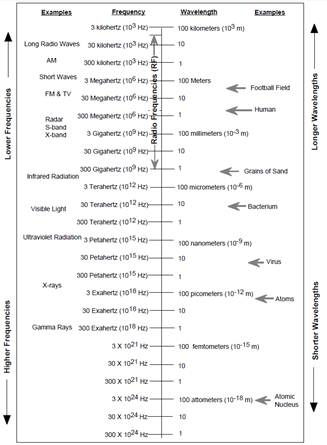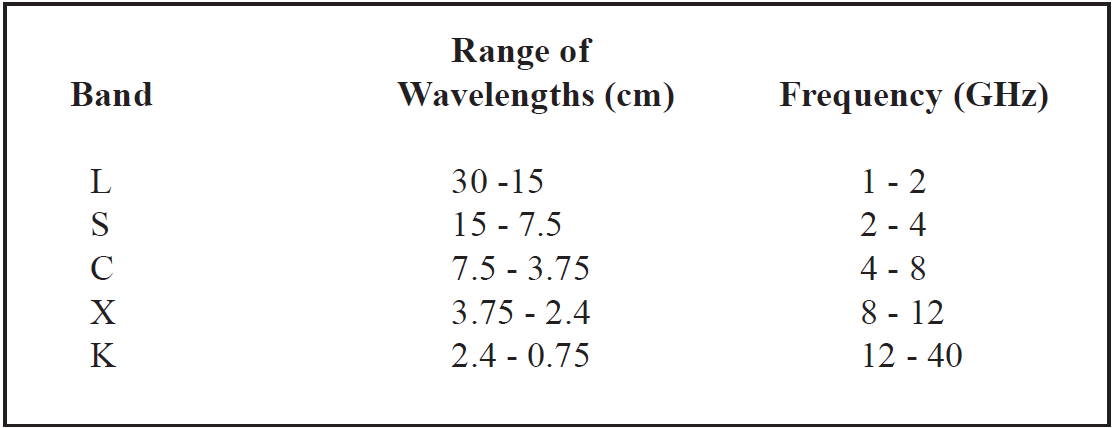
The Electromagnetic Spectrum
 المؤلف:
Diane Fisher Miller
المؤلف:
Diane Fisher Miller
 المصدر:
Basics of Radio Astronomy
المصدر:
Basics of Radio Astronomy
 الجزء والصفحة:
p12
الجزء والصفحة:
p12
 24-2-2016
24-2-2016
 3012
3012
The Electromagnetic Spectrum
Light is electromagnetic radiation at those frequencies to which human eyes (and those of most other sighted species) happen to be sensitive. But the electromagnetic spectrum has no upper or lower limit of frequencies. It certainly has a much broader range of frequencies than the human eye can detect. In order of increasing frequency (and decreasing wavelength), the electromagnetic spectrum includes radio frequency (RF), infrared (IR, meaning “below red”), visible light, ultraviolet (UV, meaning “above violet”), X-rays, and gamma rays. These designations describe only different frequencies of the same phenomenon: electromagnetic radiation.
The frequencies shown in the following two diagrams are within range of those generated by common sources and observable using common detectors. Ranges such as microwaves, infrared, etc., overlap. They are categorized in spectrum charts by the artificial techniques we use to produce them.

Electromagnetic Spectrum: Visible light only a fraction of the spectrum

The Electromagnetic Spectrum: Wavelength/frequency chart
Electromagnetic radiation with frequencies between about 5 kHz and 300 GHz is referred to as radio frequency (RF) radiation. Radio frequencies are divided into ranges called “bands,” such as “S-band,” “X-band,” etc. Radio telescopes can be tuned to listen for frequencies within certain bands.

The GAVRT can observe S-band and X-band frequencies. Much of radio astronomy involves studies of radiation well above these frequencies.
 الاكثر قراءة في مواضيع عامة في علم الفلك
الاكثر قراءة في مواضيع عامة في علم الفلك
 اخر الاخبار
اخر الاخبار
اخبار العتبة العباسية المقدسة


